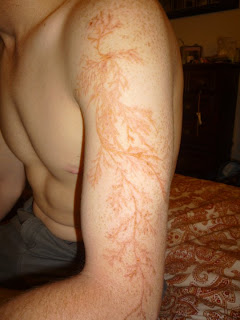I heard this morning on the news that starting Sunday, we are in for 5 days of monsoon storms and activity.
It started me thinking; how many of us Zany Zonies don’t pay attention to the dangers of the monsoon and the accompanying lightning because we have lived here for years and don’t give the lightning a second thought other than the thrill of watching a good lightning storm from our porches at night. We still go on with our regular activities during these storms, especially if they roll in during the late afternoons while we are still at work or making our way through errands on our way home.
So I pulled up some information on lightning safety and it was pretty eye-opening. It was actually pretty scary. Hundreds of people are permanently injured each year, suffering from a variety of long-term, debilitating symptoms like memory loss, attention deficits, sleep disorders, chronic pain, numbness, dizziness, stiffness in joints, irritability, fatigue, weakness, muscle spasms and depression.
Here are a couple pictures of some very lucky people who survived a lightning strike.
Employers also have a responsibility to keep their employees safe. In the event of a storm, employees need to be provided shelter and follow these safety rules as well. If you are an employer, posting a “Lightning Safety” bulletin in your employee breakroom or wherever your standard OSHA and Labor postings are hung is a great idea during the stormy summer months.
Here’s what you need to know to stay safe during an electrical storm:
– Seek shelter and keep away from windows.
– Remember the 30-30 Rule: If you can see lightning and can not count to 30 before hearing thunder, go inside and stay there for at least 30 minutes after hearing the last roar of thunder.
– Stay off corded phones, computers and other electrical equipment that put you in direct contact with electricity.
– Avoid plumbing, including sinks, baths, and faucets. Water serves as a good conductor for electricity.
– Turn off your air conditioner. Power surges from lightning can cause serious damage to your home.
– No place outside is safe during a thunderstorm. But, if you are stuck outside, find a low spot away from trees, fences and poles. Crouch low to the ground, but do not lay flat on it.
Even if lightning doesn’t hit you directly, it might still have a strong enough charge to injure you.
So remember, when thunder roars, go indoors.
In the absence of Chad Snow, blog posted by:
April Lang-Snow, Business Manager @ Snow and Carpio, PLC



